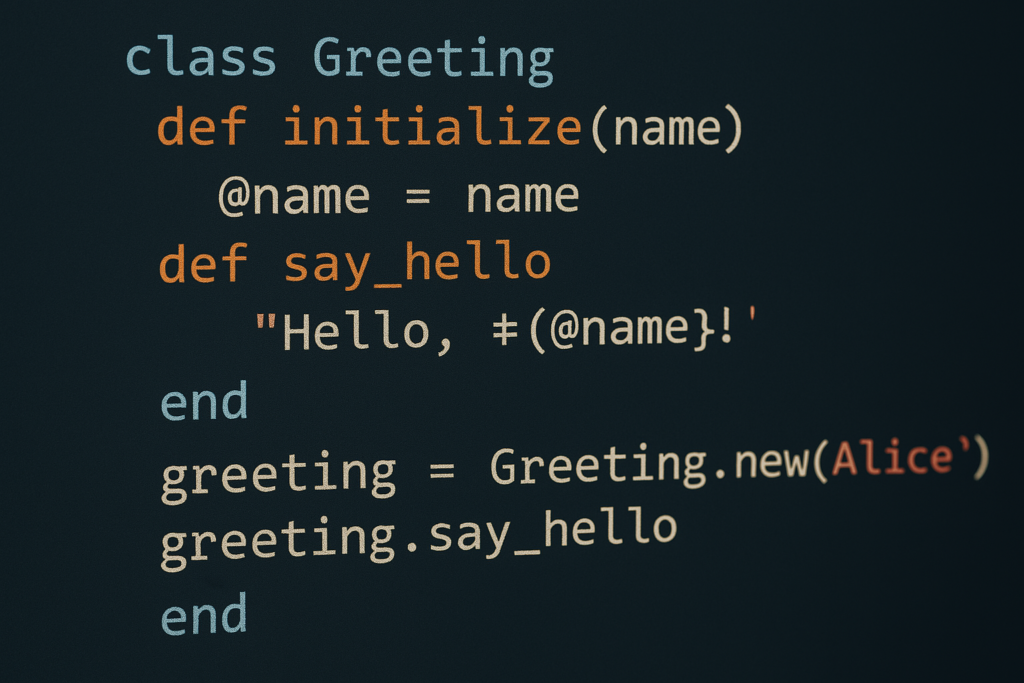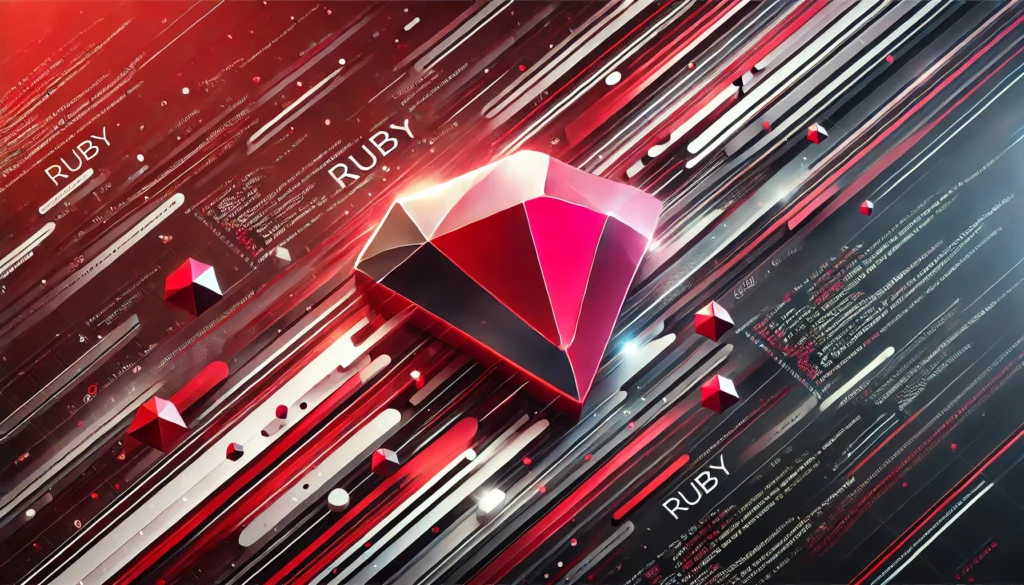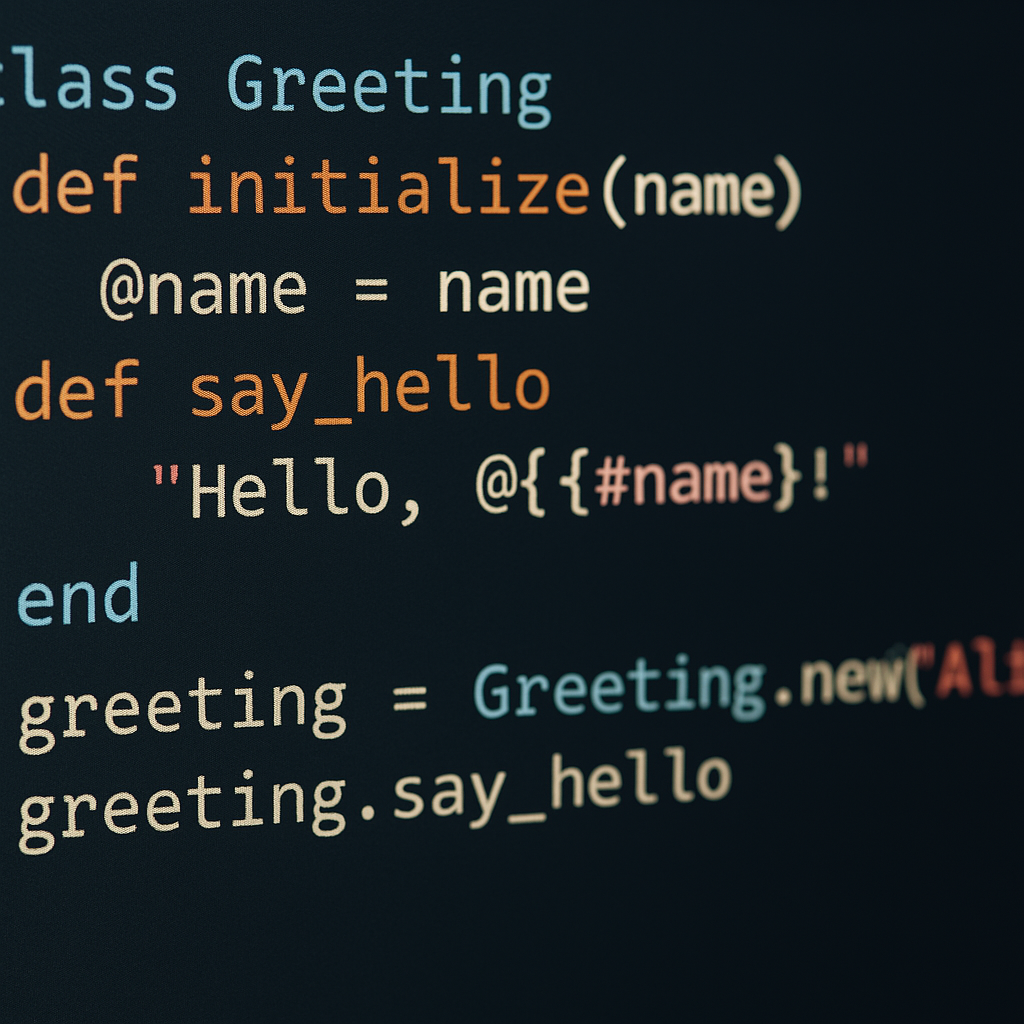Introduction (2025 Perspective)
As of 2025, Ruby remains a cornerstone of expressive, developer-friendly programming, celebrated for its elegant syntax and emphasis on programmer happiness. Designed by Yukihiro “Matz” Matsumoto in the 1990s, Ruby’s philosophy of prioritizing human-readable code over rigid formalism has kept it relevant in an era dominated by rapid technological shifts. Over the past decade, Ruby has evolved beyond its stronghold in web development (powered by Rails) to adapt to modern demands. With advancements in concurrency models, JIT compilation, and tighter integration with cloud-native ecosystems, Ruby 4.0+ now competes in performance-critical domains like real-time data processing, microservices, and AI-driven applications. Its thriving open-source community continues to innovate, expanding Ruby’s reach into quantum computing prototyping, blockchain scripting, and edge computing, proving that a language built for joy can also scale for the future.
Mid-2025 Ruby Ecosystem

The Ruby ecosystem in 2025 thrives on its versatility. Frameworks like Hanami and Roda have gained traction for lightweight, high-performance APIs, while Rails remains a stalwart for full-stack development, now optimized for serverless architectures and WebAssembly. Ruby’s metaprogramming capabilities have found new life in AI/ML experimentation, enabling developers to dynamically generate models and automate workflows. With the rise of decentralized technologies, Ruby gems like CipherRuby simplify blockchain interactions, and tools like Polyglot allow seamless interoperability with Python, Rust, and Web3 libraries. Additionally, initiatives like the “Ruby 2030 Sustainability Project” focus on energy-efficient coding practices, aligning with global green tech trends. Startups and enterprises alike leverage Ruby’s rapid prototyping strengths to build scalable IoT solutions, smart contracts, and immersive metaverse experiences, proving its adaptability in a polyglot tech landscape.
Top 50 Q&A
Here’s a curated list of 50 Ruby technical interview questions with concise answers, organized to build from foundational to advanced concepts:
1. What is Ruby?
Ruby is a dynamic, object-oriented scripting language designed for simplicity and productivity. It was created by Yukihiro “Matz” Matsumoto in 1995.
2. Explain variable types in Ruby.
Local (var), instance (@var), class (@@var), and global ($var).
3. Symbols vs. Strings: Key differences?
Symbols are immutable and memory-efficient, while strings are mutable and consume more resources.
4. What are RubyGems?
Packaged libraries or tools for Ruby, distributed via the gem command.
5. How to install a gem?
gem install gem_name.
6. What is Bundler?
A dependency manager that uses a Gemfile to track and install project-specific gems.
7. Name Ruby’s looping constructs.
while, until, for, each, times, loop, and upto/downto.

8. Difference between nil and false.
nil is an object of NilClass (absence of value), while false is a FalseClass boolean.
9. What is a module in Ruby?
A container for methods, constants, and classes, used for namespacing or mixins.
10. How to include a module in a class?
Use include for instance methods, extend for class methods.
11. Proc vs. Lambda: Differences?
Procs don’t enforce argument count and return exits the enclosing method. Lambdas enforce arguments and return exits only themselves.
12. What does yield do?
Invokes a block passed to a method, e.g., def method; yield; end.
13. How does class inheritance work?
Use < for single inheritance: class Child < Parent.
14. Explain super.
Calls the parent class’s method of the same name.
15. Ruby’s access modifiers.
public, private, protected (methods accessible by same-class instances).
16. Class vs. Module.
Classes can be instantiated and support inheritance; modules cannot.
17. What is RSpec?
A testing framework for behavior-driven development (BDD).
18. What is an instance variable?
A variable prefixed with @, scoped to an object instance.
19. ==, eql?, and equal? differences.
- == checks value equality.
- eql? checks value and type (used in Hash keys).
- equal? checks object identity.
20. What is RVM?
Ruby Version Manager: installs, manages, and switches Ruby versions.
21. What is duck typing?
“If it quacks like a duck, treat it as one.” Focus on methods over types.
22. Handling exceptions in Ruby.
begin
# code
rescue => e
# handle error
ensure
# always execute
end
23. What is main?
The top-level main object (context where code executes outside classes).
24. Closure in Ruby?
A block, proc, or lambda that captures its surrounding context.
25. Metaprogramming example.
Dynamically defining methods:
define_method(:method_name) { … }
26. Explain self.
Refers to the current object (e.g., instance in a method, class in class scope).
27. Singleton method.
A method defined for a single object:
obj = Object.new
def obj.custom_method; end
28. Active Support?
A Rails library adding utility methods (e.g., pluralize, present?).
29. load vs. require.
load reloads code each time; require loads once (ignores extensions).
30. What is a Hash?
A key-value collection: { key: “value” }.
31. What is an Array?
An ordered collection: [1, “two”, :three].
32. Iterate over a Hash.
hash.each { |k, v| puts “#{k}: #{v}” }
33. each vs. map.
each returns the original; map returns a new array of block results.

34. Class variable example.
@@count = 0 (shared across class and subclasses).
35. Check if a Hash key exists.
hash.key?(:key) or hash.has_key?(:key).
36. Ternary operator syntax.
condition ? true_value : false_value.
37. String concatenation methods.
str1 + str2, str1 << str2, or interpolation “#{str1} #{str2}”.
38. String interpolation.
Embeds variables in double-quoted strings: “Hello, #{name}!”.
39. Delete a file.
File.delete(“file.txt”).
40. puts, print, p differences.
- puts: Adds newline, calls to_s.
- print: No newline.
- p: Calls inspect for debugging.
41. What is a Struct?
A class with accessors: Person = Struct.new(:name, :age).
42. ||= operator.
Conditional assignment: var ||= “default” (assign if nil/false).
43. Sort an Array.
arr.sort or arr.sort_by { |item| item.property }.
44. What is a lambda?
An anonymous function with strict argument checking: lambda { |x| x * 2 }.
45. private vs. protected.
private methods need implicit receiver; protected allows explicit same-class receivers.
46. The Enumerable module.
Provides methods like map, select, and reduce to classes implementing each.
47. Read a file.
content = File.read(“file.txt”)
# or
File.open(“file.txt”, “r”) { |f| f.read }
48. gsub method.
Replaces all occurrences in a string: “hello”.gsub(“l”, “w”) #=> “hewwo”.
49. Time vs. DateTime.
DateTime supports dates beyond Time’s 1901-2038 range and has more precision.
50. attr_accessor purpose.
Automatically creates getter and setter methods: attr_accessor :name.
This list covers core Ruby concepts, idioms, and common tools, providing a solid foundation for technical interviews. Each answer is designed to be succinct yet comprehensive.
Conclusion: Ruby’s Future Possibilities
Looking ahead, Ruby’s future lies in balancing tradition with innovation. Its core philosophy—developer productivity and code clarity—positions it as a critical tool for tackling complex problems, from ethical AI governance to decentralized finance. As quantum computing matures, Ruby’s simplicity could make it a preferred language for educational and experimental quantum algorithms. Meanwhile, its growing support for parallel processing and real-time systems opens doors to robotics and autonomous systems development. The global Ruby community’s commitment to inclusivity and mentorship ensures a steady influx of talent, fostering projects that bridge tech and societal challenges. By 2030, Ruby may not just be a language but a movement—one that champions humane technology, sustainable innovation, and the belief that coding should be as joyful as it is impactful. In a world racing toward automation, Ruby reminds us that the heart of technology is still human.
Curated for you:





